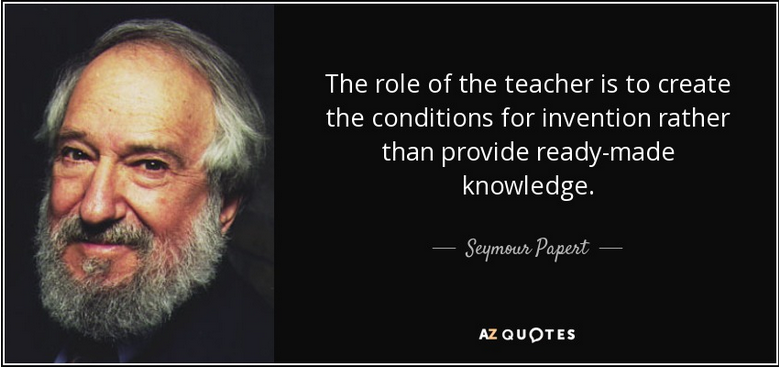The term “constructionism” was coined by Seymour Papert, a pioneer of artificial intelligence and educational technology, who was influenced by the constructivist theories of Jean Piaget and Lev Vygotsky. Constructionism differs from constructivism in that it focuses not only on how learners construct meaning internally, but also on how they construct external artifacts that reflect their learning process and outcomes.
One of the main principles of constructionism is that learning is most effective when learners are involved in making things that are personally meaningful and shareable with others. This can include physical objects, such as robots, models or sculptures, as well as digital products, such as games, animations or simulations. By creating these artifacts, learners engage in a cycle of design, implementation, testing and revision, which fosters their problem-solving, creativity and critical thinking skills. Moreover, by sharing their artifacts with peers and teachers, learners receive feedback, collaborate and communicate their ideas and knowledge.
Another principle of constructionism is that learning is situated in a rich and authentic context that provides learners with multiple sources of information and inspiration. This can include the physical environment, such as the classroom, the school or the community, as well as the cultural and historical background of the topic or domain. By exploring these contexts, learners develop a deeper and more nuanced understanding of the subject matter and its relevance to their own lives and society. Furthermore, by connecting their learning to real-world issues and challenges, learners develop a sense of agency and responsibility for their own learning and for the world around them.
The constructionist movement in European education has been influenced by various initiatives and projects that have applied the principles of constructionism to different domains and settings. Some examples are:
The Logo programming language, developed by Papert and his colleagues at MIT, which allows learners to create graphical representations of mathematical concepts and phenomena using simple commands.
The LEGO Mindstorms robotics kits, which enable learners to design, build and program robots that can perform various tasks and interact with their environment.
The Scratch programming environment, created by the Lifelong Kindergarten group at MIT Media Lab, which allows learners to create interactive stories, games and animations using drag-and-drop blocks.
The Fab Lab network, founded by Neil Gershenfeld at MIT Center for Bits and Atoms, which provides learners with access to digital fabrication tools, such as 3D printers, laser cutters and CNC machines.
The European Schoolnet’s Future Classroom Lab, which offers teachers and students a flexible and innovative learning space that supports different pedagogical scenarios and technologies.
The constructionist movement in European education has been shown to have positive impacts on learners’ motivation, engagement, achievement and attitudes towards learning. It also supports the development of key competences for the 21st century, such as digital literacy, creativity, collaboration and problem-solving. However, there are also some challenges and limitations that need to be addressed, such as the availability and affordability of resources and tools, the assessment and evaluation of learning outcomes and processes, the integration of constructionist activities into the curriculum and the professional development of teachers. Therefore, more research and practice are needed to explore the potential and implications of constructionism for European education in the future.

